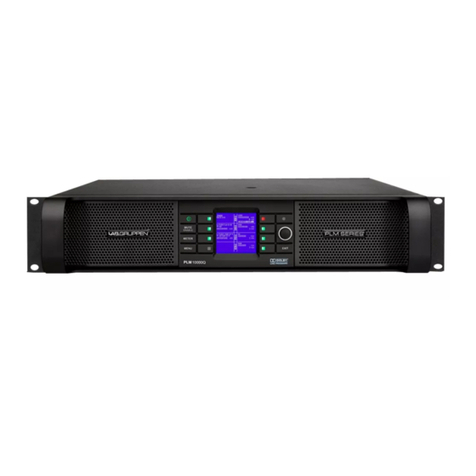3
To completely disconnect this equipment from the AC
mains, disconnect the power supply cord plug from the AC
receptacle. The mains plug of the power supply cord shall
remain readily operable.
Français: Pour démonter complètement l’équipement de
l’alimentation générale, démonter le câble d’alimentation
de son réceptacle. La prise d’alimentation restera aisément
fonctionnelle.
To reduce risk of re or electric shock, do not expose this
apparatus to rain or moisture.
Français: Pour réduire les risques d’incendie ou de choc
électrique, n’exposez pas l’appareil à la pluie ou à l’humidité.
Do not expose this system/apparatus to dripping or splashing
and ensure that no objects lled with liquids, such as vases,
are placed on the apparatus.
Français: N’exposez pas ce système/appareil au
ruissellement ni aux éclaboussures et assurez-vous qu’aucun
objet contenant du liquide tel qu’un vase n’est placé sur
l’appareil.
This apparatus must be connected to a mains socket outlet
with a protective earthing connection.
Français: Cet appareil doit être raccordé à une prise secteur
avec terre de protection.
The mains plug is used as a disconnect device and shall
remain readily operable.
Français: Lorsque la prise du réseau d’alimentation est utilisés
comme dispositif de déconnexion, ce dispositif doit
demeuré aisément accessible.
1.2.3. Caution
To reduce the risk of re or electric shock, do not remove screws.
No user-serviceable parts inside. Refer servicing to qualied
service personnel.
Français: Pour réduire le risque d’incendie ou de choc
électrique, ne pas retirer les vis. Aucune pièce réparable par
l’utilisateur. Coner l’entretien àpersonnel qualié.
1.2.4. User responsibility
Mains connection grounding
Your amplier must be connected to a grounded socket outlet.
Speaker output hazard on amplifiers
Ampliers are capable of producing hazardous output
voltages. To avoid electrical shock, do not touch any exposed
speaker wiring while the amplier is operating. The external
wiring connected to the speaker terminals shall be installed
by a qualied person, or ready-made leads or cords of
appropriate capacity shall be used.
As the power output channels on ampliers produce high
voltage, do not connect or disconnect speaker cables when
the mains power is on.
Radio interference
A sample of this product has been tested and complies with
the limits for the European Electro Magnetic Compatibility
(EMC) directive. This equipment has also been tested and
found to comply with the limits for a Class A digital device,
pursuant to Part 15 of the FCC Rules. These limits are
designed to provide reasonable protection against harmful
interference from electrical equipment. This product uses
radio frequency energy and if not used or installed in
accordance with these operating instructions, may cause
interference to other equipment, such as radio receivers.
However, there is no guarantee that interference will not
occur in a particular installation. If this equipment does cause
harmful interference to radio or television reception, which
can be determined by turning the equipment on and off, the
user is encouraged to try to correct the interference by one or
more of the following measures:
• Reorient or relocate the antenna.
• Increase the separation between the equipment and
receiver.
• Connect the equipment to an outlet on a circuit different
from that to which the receiver is connected.
• Check if the affected unit complies with the EMC limits for
immunity, (CE-labeled). If not, address the problem with
the manufacturer or supplier. All electrical products sold
in the EC must be approved for immunity against
electromagnetic elds, high voltage ashes, and radio
interference.
• Consult the dealer or an experienced radio/TV technician
for help.
Speaker damage
Amplier apparatus is very powerful and can be potentially
dangerous to both loudspeakers and humans alike. Many
loudspeakers can be easily damaged or destroyed by
overpowering them. Always check the speaker’s continuous
and peak power capabilities. Although the ampliers
attenuators can be used to reduce the overall gain, an
increase of the input signal can result in full output power,
which may cause damage to connected speakers.
Maintenance
For safe and reliable operation, the dust lters on both sides
of the front panel, behind the grilles, should be removed and
cleaned regularly to ensure maximum airow through the
device.
If the dust lters are not maintained there will be safety
risks; for example, high internal temperatures could ignite
the dust and start a re. There is also a risk that the unit will
malfunction since it is dependent on constant airow from
front to rear. If the dust lters are not clean and the unit
malfunctions, any resulting problems will not be covered by
the warranty.
This Class A digital apparatus complies with Canadian ICES-003.
Cet appareil numérique de la classe A est conforme à la norme NMB-003
du Canada.




































